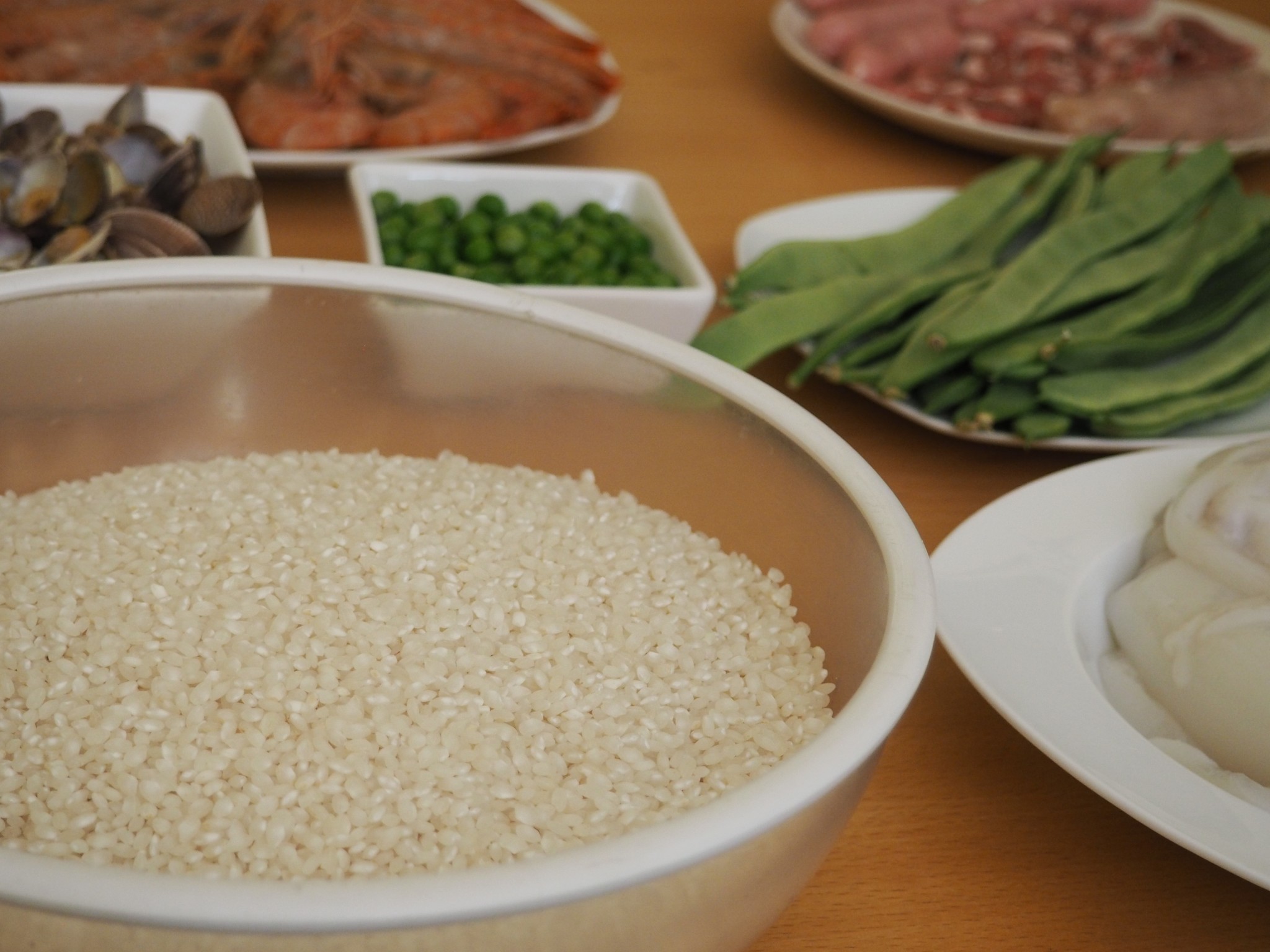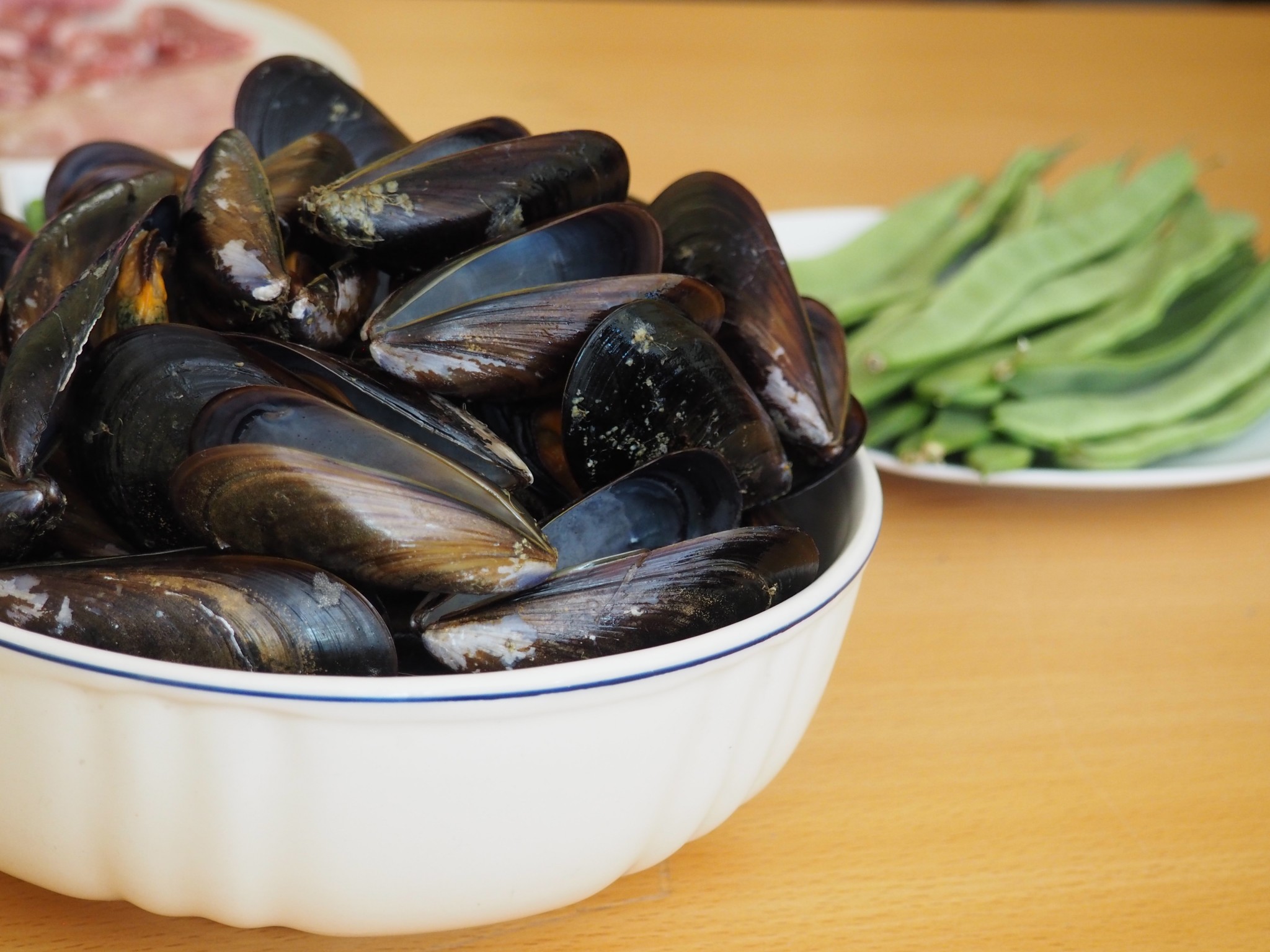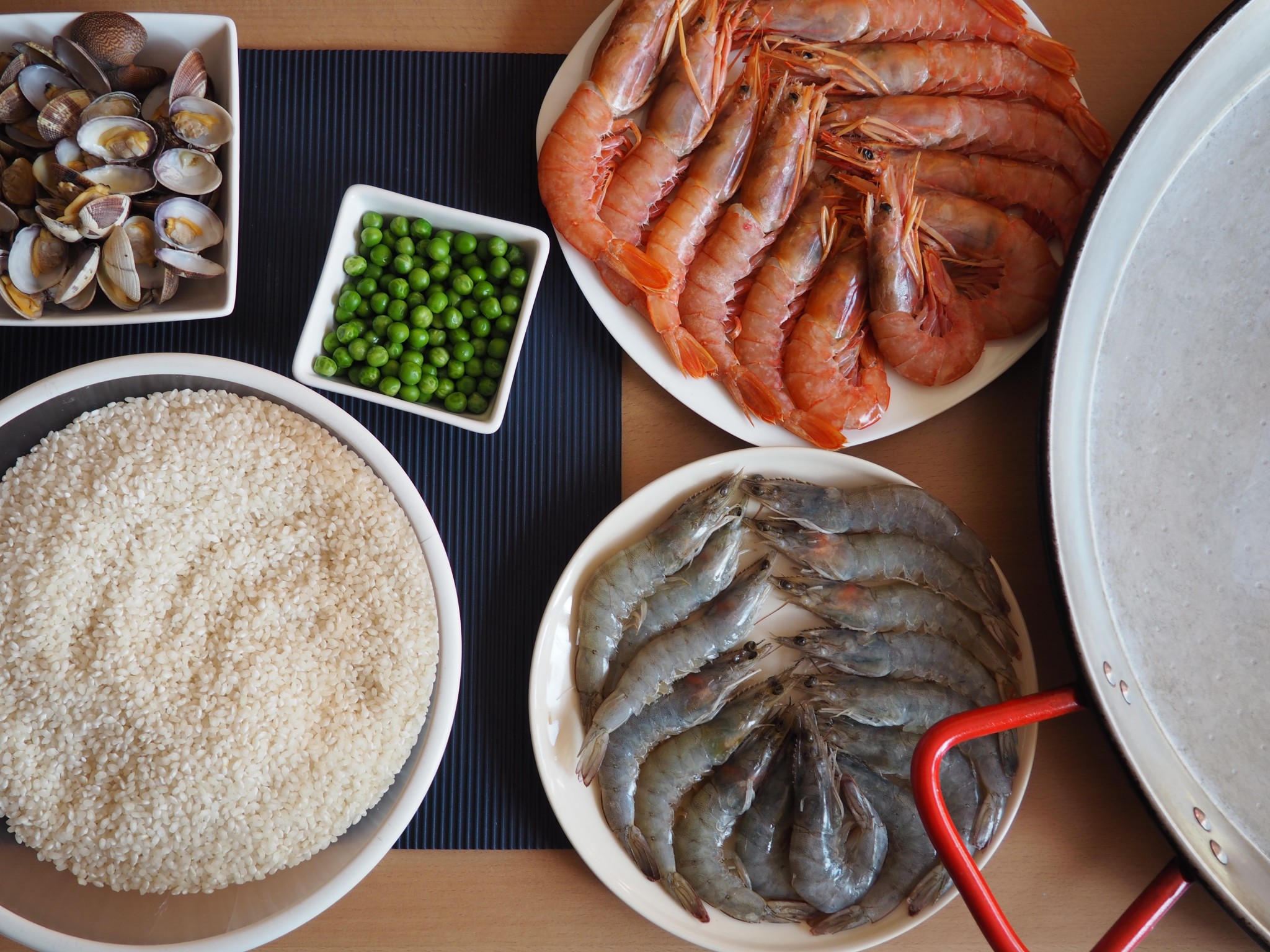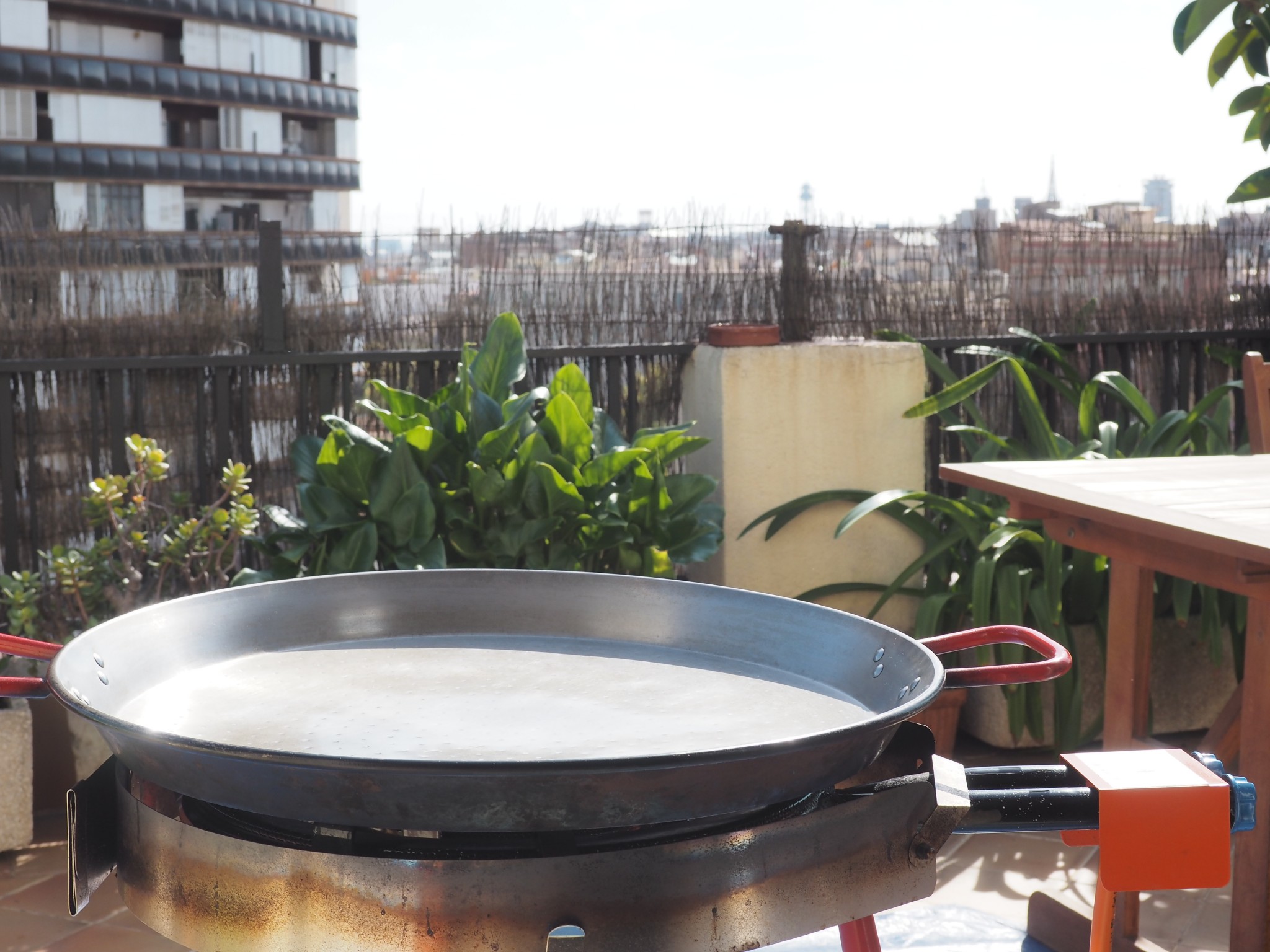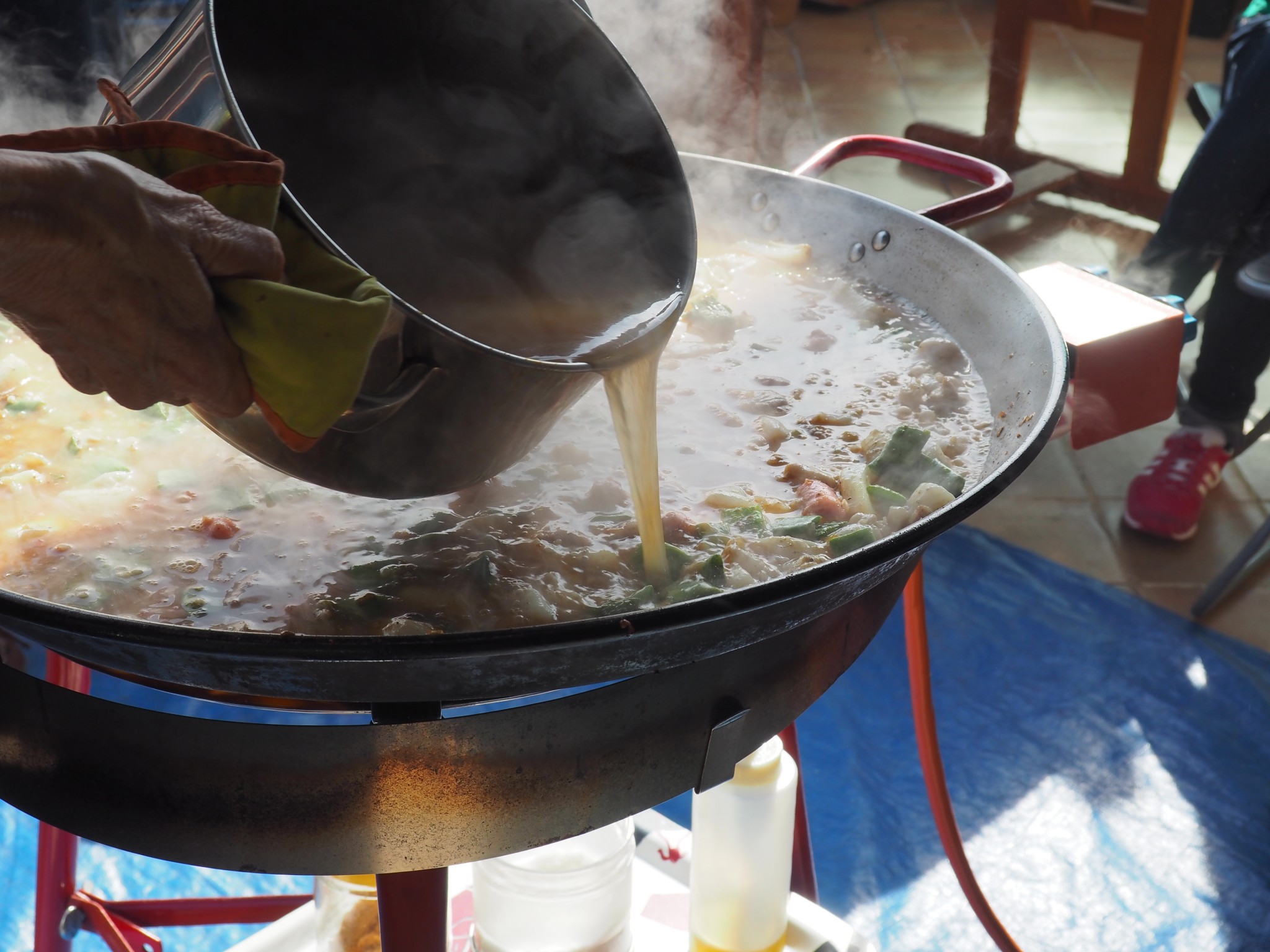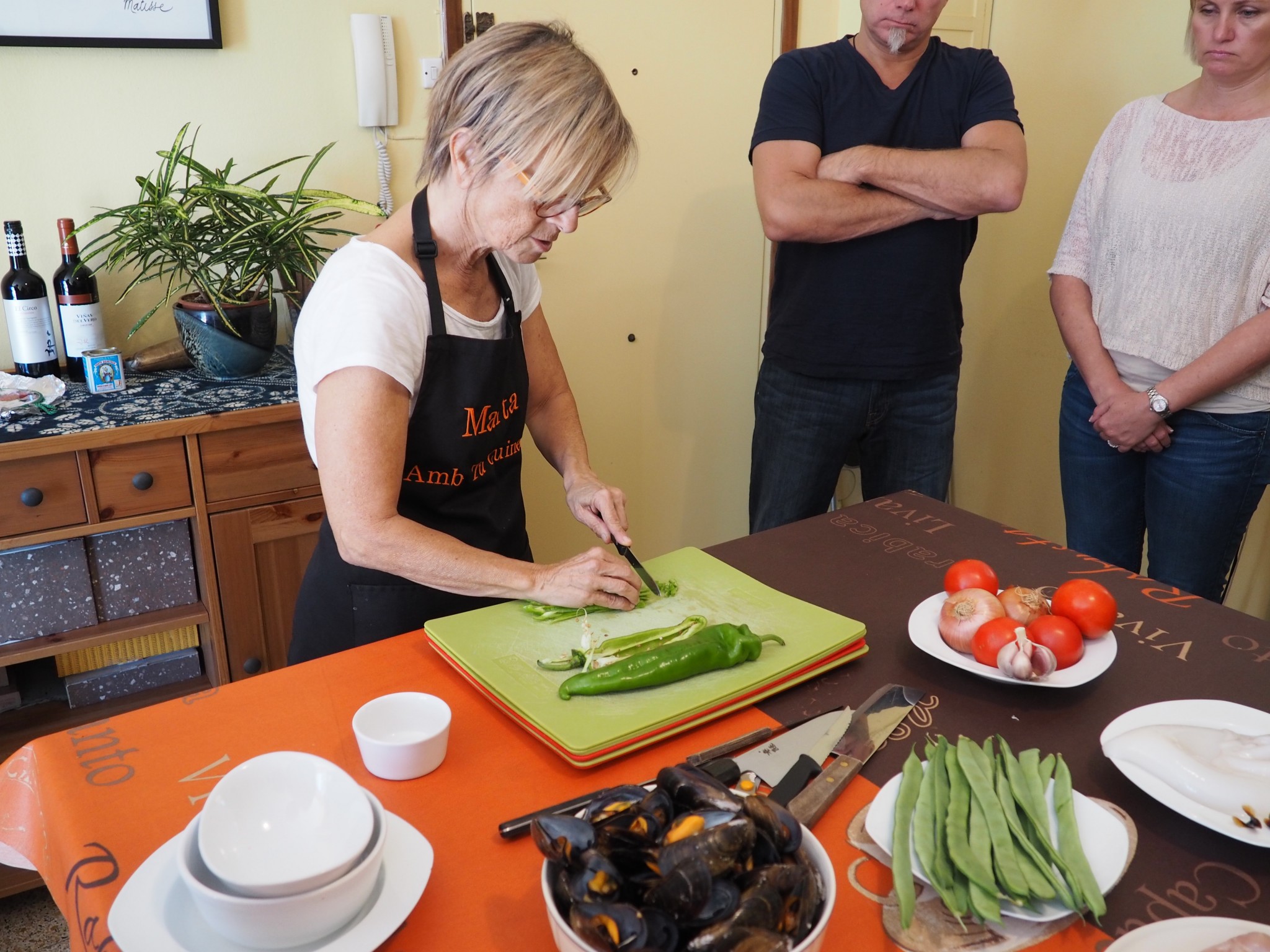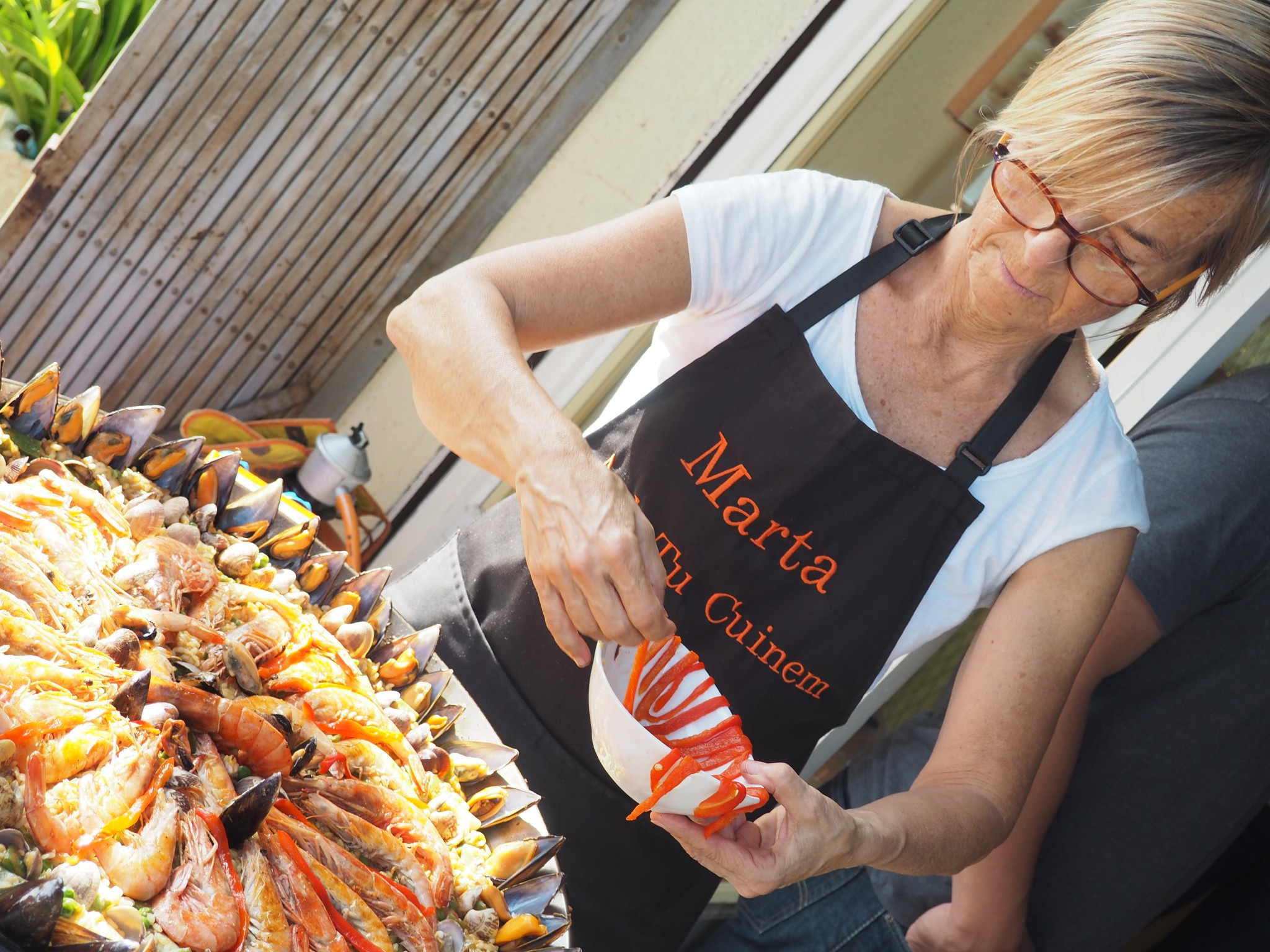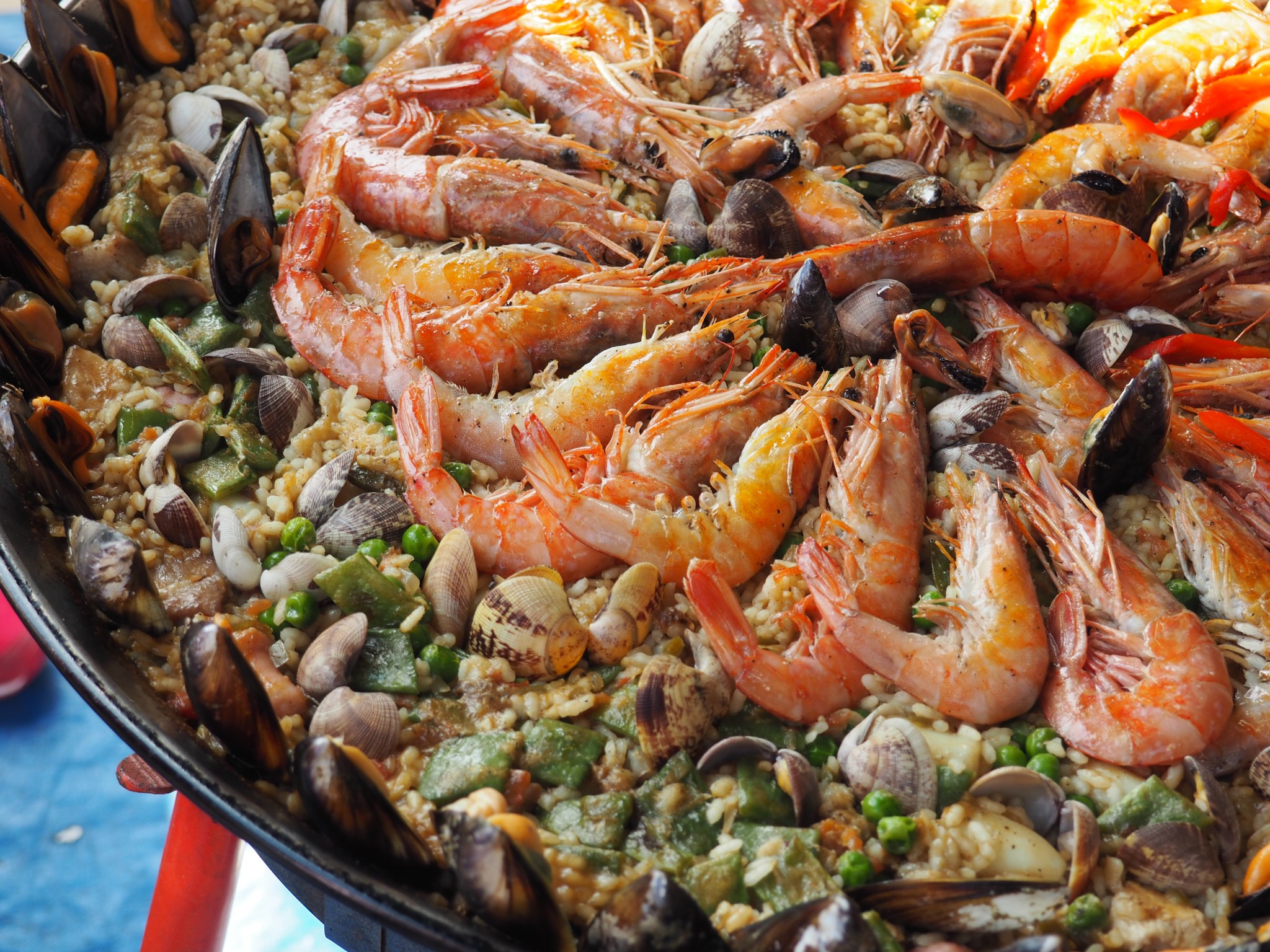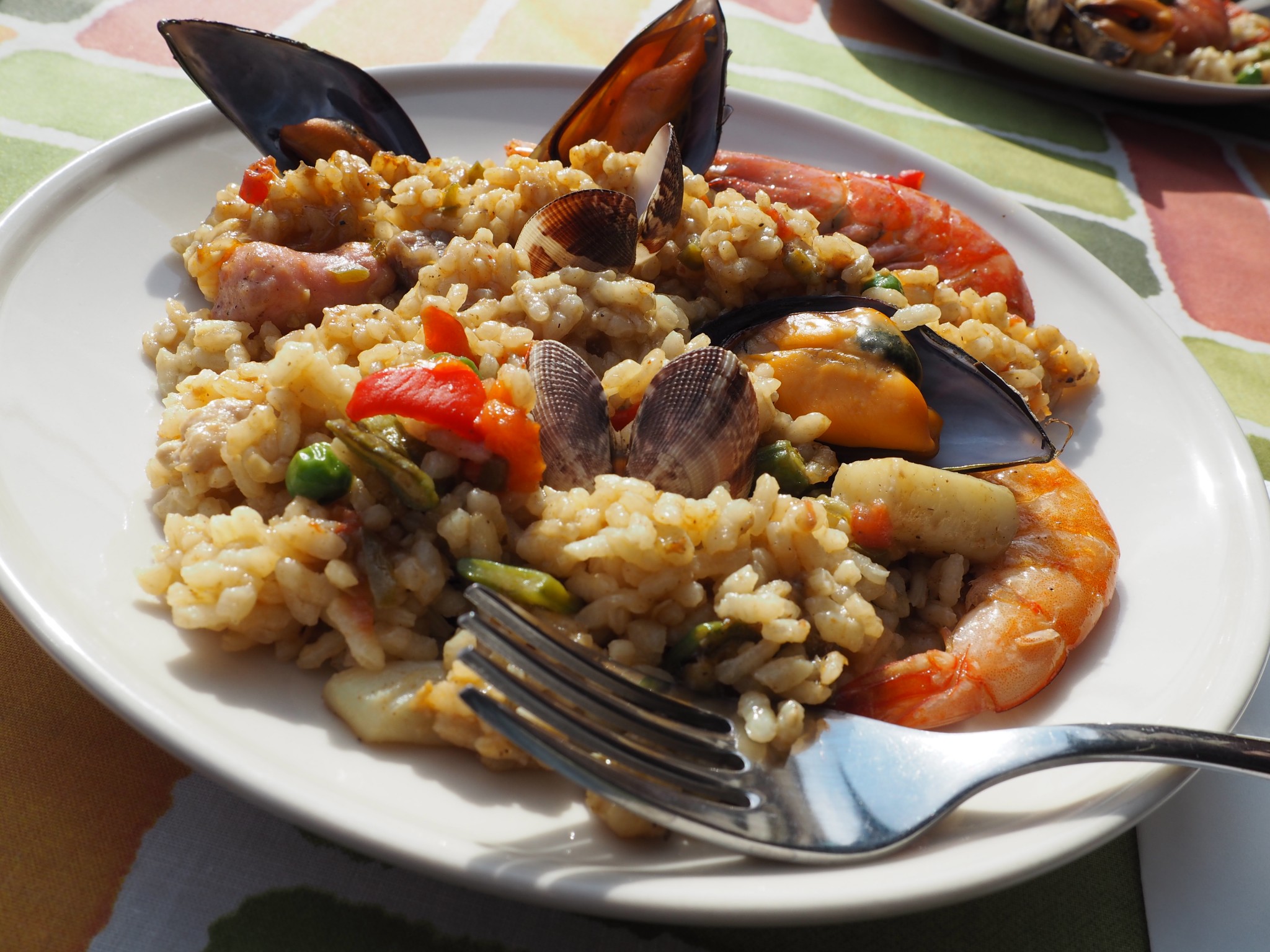How To Make The Best Mouthwatering Paella Marinera
The ultimate summer dish, paella marinera is a heady concoction of shrimp, langoustines, squid and mussels, a firm favorite across the region in the hotter months. Of course, the obvious pairing is white, as red would smother the more delicate flavors of seafood paella.
It’s only been five days since returning from Barcelona, and I find myself staring out the window, daydreaming of Spain. There is something so magical about Barcelona. I can’t seem to place my finger on it. The very first time that Gregg and I had visited Barcelona, it was love at first sight. On my end at least! There is a vibe to the city that can’t be explained. It’s electric, yet humbling. The liveliness of the people, incredible architecture at every corner, the tapas bars and top quality ingredients like Iberico ham and delicate seafood conservas accompanied with Vermut with a green olive. Every neighborhood has its own charm with hidden alleyways leading you to secret treasures like coffee shops, boutiques, and central markets with fresh produce, meats, and eggs.
Durning our extended stay in Barcelona, I was lucky enough to take a Paella class through EatWith. It was one of the most incredible experiences. I truly think that you can learn so much from food in a country. And learning the preparation that goes behind it, you experience the culture at much deeper level. You see the art and the love that goes behind each dish. The carefully prepared and crafted meal, by someone who is passionate about their craft.
The Paella class that I took was hosted by Marta; a Barcelona native, whose humble home is on the top floor of a charming apartment building, featuring a rooftop terrace overlooking the hustle and bustle of L'Eixample district. At the far left you see the iconic building, and to the right the various rooftops and buildings of the Barcelona cityscape, with the Mediterranean sea peaking at a distance.
Like many Barceloncenes, Marta had a spark and passion. A passion and spark for her city and cooking. Upon arrival, she greeted us all with a European double kiss, making us all feel at home as if we were part of her family. She showed us step by step, carefully explaining things. She provided us with tips and advice on cooking Paella one we are back home.
After the Paella had been finished, we all pitched in to set the table on the outside terrace, as Marta plated all each plate, carefully placing the shrimps, prawns, mussels and clams on each one. The Paella was some of the best I’ve ever eaten. The bursts of flavors at each bite was like no other.
Once leaving her class, I knew I had to get a Paella to being back home. I know, I know…we can buy one here in the States. But there is something so special about buying a Paella pan in Spain. And, not to mention they are significantly much cheaper in Spain than home.
Before taking this class, I always thought that Paella was a hard, complicated dish. I also learned that Paella shouldn't be a neon like yellow (we’ve got it all wrong here in the States!), but more of a brownish color. Paella is also a Sunday dish that Spaniards enjoy with family. So, I’m going to break it down for you, and hopefully this recipe inspires you, too.
This recipe makes 6-8 servings
What You’ll Need
Sofrito
1 green pepper (Anaheim peppers)
1 onion
2 small tomatoes
3 cloves of garlic
Paella
1 cup of peas
250 g of pork chop cut into small pieces
250 g of chicken cut into small pieces
250 g of pork sausage cut into small pieces
12 mussels
12 clams
6 large shrimps
6 large prawns
1 cuttlefish (300g) Fish stock (2 cups for each one of rice)
Rice 70-80 g per person* (roughly 1/3 cup)
1 Roasted red bell pepper
Virgin Olive Oil
1 tbsp Spanish Smoked Paprika
Saffron Sea
Sea salt
Black pepper
Raw sugar
What You’ll Need To Know
Start by chopping the green peppers, onion, garlic and tomatoes very finely.
Remove the skin from the roasted bell peppers and cut into strips.
Steam the mussels and the clams and reserve them for later.
Pour olive oil in the paella pan and sauce the shrimp and prawns for about 1 to 2 minutes on each side. Remove them from the pan. Add a dash of salt and pepper.
Do the same with the cuttlefish. Add a dash of salt and pepper.
Salute the chicken, pork, and sausage then move to one side of the paella pan. Add a dash of salt and pepper.
On the other side, you’ll make the sofrito. To make a sofrito, cook the onions, and let them cook until they become translucent and caramelized. Then, add the green pepper, and when it’s almost done add the garlic. The last ingredient in the sofrito is the tomatoes. Add a dash of paprika. Add a dash of sugar to reduce the acidity of the tomatoes.
Add the rice and mix well with the sofrito, making sure that both are mixed well. This is important for the rice to absorb all of the flavors. Add a dash of salt and pepper and saffron.
Once mixed together, add in the proteins, except the shellfish and shrimps. You’ll also want to add the peas.
Add the fish stock. Let it cook until the rice is almost done.
The rice will be done after the water is absorbed, 30 minutes or so. Turn off the heat and arrange the mussels on the outer edge of the pain, followed by the clams, shrimp, and prawns onto of the paella. Place the roasted red pepper strips on top of the paella.
Cover the paella with a cheese cloth and let it rest of 5 minutes or more. It will absorb the rest of the broth.
Snap a photo of your beautiful creation and plate.
Recipe makes 6-8 servings
* You will need 480-640g
A few pointers. It’s good to point out that Paella, like much of European cooking, is all about using fresh, seasonal ingredients. In the summer, you can substitute peas for artichokes, and chicken for the rabbit to make it a bit heartier. The Rice should always be a short grain rice, and never long grain. In this class, we used a locally grown rice called bomba rice. This type of rice is the ultimate Paella rice, it absorbs 30% more broth.
Also, you're going to need a Paella pan. You can get one here. But, you can also use a flat skillet that is 1" thick.
Roasting Red Peppers. When it comes to roasting the bell pepper, this should be done before you start the rest of the meal. Roast in an oven on high turning every 10 minutes or so for even cooking. No need for oil or salt. After it cooks, the skin should flake off rather easily.
Let’s Talk Fish Stock. You can buy fish stock, or you can make it. Making it is rather simple. You’ll need to get fish heads and fish bones at the market and boil them down for 30 minutes with 5-6 cups water, salt, and pepper. You can also use the broth from the mussels and clams along with the fish heads and bones. If you’re going to use this, make sure to filter out the broth with a cheesecloth to remove any sand.


